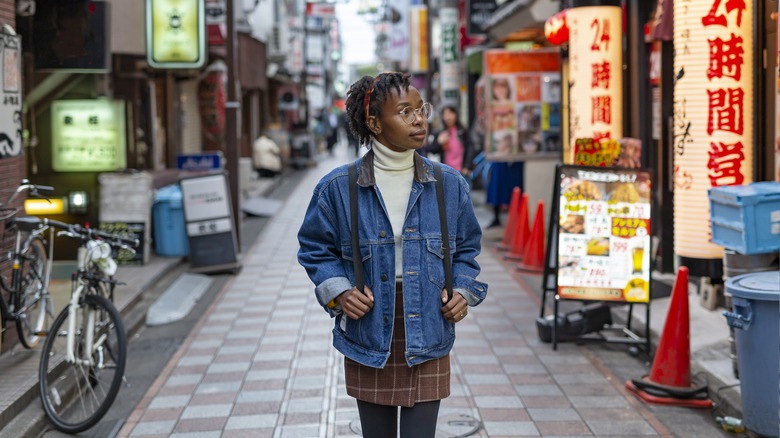Ask anybody what’s on their travel bucket list, and their response is sure to include “Japan.” Thanks to a combination of rich heritage, lush landscapes, and labyrinth cities packed with skyscrapers, temples, and tourist traps alike, the country has soared in popularity, with American Express claiming that the number of bookings has increased by 1,300% since 2019 (via Bloomberg).
Part of what makes Japan so alluring is that its culture and customs are so distinct and unique to those of other countries. That’s also what makes it an overwhelming travel destination, especially for first-time visitors. If you start your journey in a major city like Tokyo, Yokohama, or Osaka, you’re instantly immersed in a world of neon lights, bustling crowds, loud noises, a million different smells, and sensory overload.
With so much to see, do, and eat, a trip to Japan really isn’t the kind of vacation you can make up as you go along. The last thing you need is to run into an easily avoided stumbling block like a lack of internet or 30 minutes spent figuring out the route to your next destination — which is why you’ll want to arrive armed with as much knowledge as possible.
Get quick meals at 7-Eleven
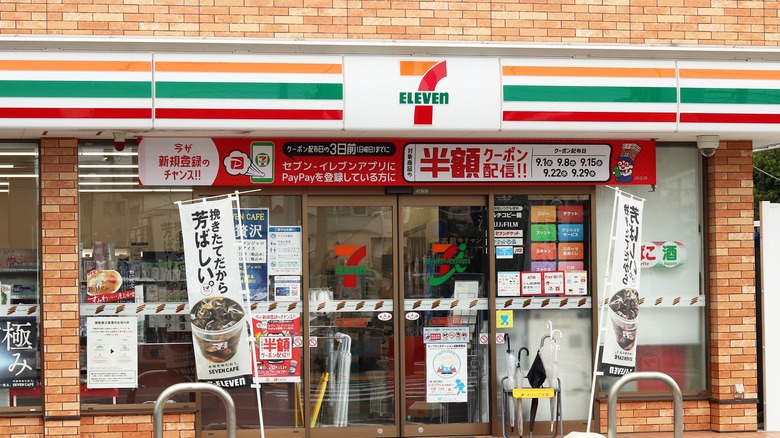
It’s tough to walk for longer than 20 seconds without stumbling upon a convenience store in Japan. Also known as conbini, these stores are usually open 24 hours a day and are packed full of affordable tasty treats that will keep you going without the time (and money) it takes to eat at an actual restaurant.
For as cheap as 200 yen ($1.34), you can enjoy the likes of onigiri rice balls, chicken karaage, sandos, oden, and bento boxes. We also recommend picking up taiyaki for a quick sugar boost. Shaped like fish and made of pancake or waffle batter, they’re usually filled with red bean paste, custard, and chocolate and make for an endlessly addictive snack.
The most common store is 7-Eleven, which has over 20,000 locations throughout Japan and is miles above its U.S. counterpart in the culinary department. There are also over 15,000 FamilyMarts scattered across the country, but they typically don’t offer as much variety.
Get pocket Wi-Fi
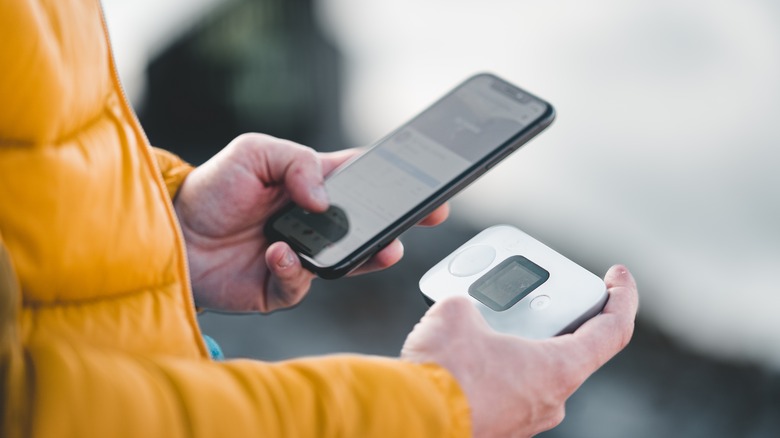
Public Wi-Fi is surprisingly scarce in Japan, which can put you in some tough spots if you get lost mid-metro commute. Fortunately, pocket Wi-Fi exists — and it is a lifesaver. For as cheap as $5 a day, you can rent a portable device that will allow you to access the internet on the go, even on the train. The majority will allow you to connect multiple devices at the same time and come in a variety of different speeds and GB, with some even offering unlimited data throughout your stay.
If you rent in advance through a website like Ninja WiFi or Japan Wireless, you can pick up the device (also known by the much cuter name of a Wi-Fi Egg) at a designated counter once you’ve got through customs at airports including Haneda and Narita in Tokyo, Chubu Centrair, Kansai International, Fukuoka, and more. Once you’re done, you can just pop it into the returns box at the airport on the way back. Easy.
Buy a JR Pass
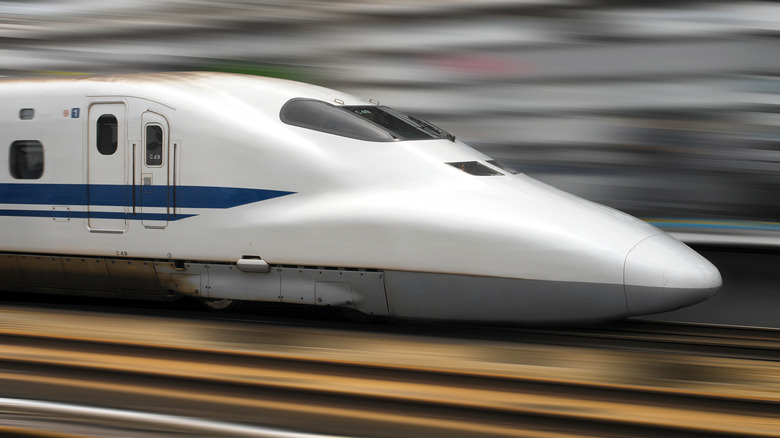
Steve Allen/Shutterstock
Sadly, the JR (Japan Rail) Pass isn’t as cheap as it once was. It surged in price by 70% in July 2023 as the yen continued to decline in value against other currencies around the world. However, if your itinerary includes extensive train travel, it’s still worth the purchase.
The Japan Rail Pass will allow you to ride the rail to your heart’s desire — including the country’s infamous, lightning-speed Shinkansen bullet trains (for a supplementary fee) and the Narita Express. It’s more expensive to purchase once in Japan, so we recommend buying yours in advance on the JRailPass website where it costs $340.65 for seven days, $544.45 for 14 days, and $680.35 for 21 days.
If your visit is limited to just one or two cities, such as Tokyo and Osaka or Tokyo and Kyoto, then it probably isn’t necessary. For example, a trip between Tokyo and Osaka typically costs $120 each way, which is considerably cheaper than forking out a few hundred dollars for a JR Pass.
Download train schedules and maps
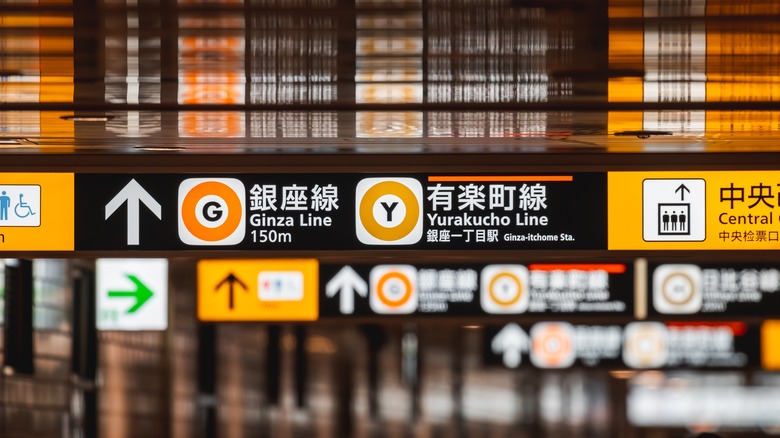
KenSoftTH/Shutterstock
Japan has incredible public transportation. It also happens to be extremely overwhelming if it’s your first (or second, or third) time in the country. Tokyo’s metro can be especially confusing, with nine different train lines and 180 different stations to navigate. Its roads are even more complex with the majority not even having names, baffling even the city’s own taxi drivers.
With that in mind, future-proofing for any situation where you may end up lost in an unknown place is always a good idea. Download or screenshot train schedules ahead of time through the JRailPass website, which offers both interactive and PDF versions of Tokyo, Osaka, and Kyoto’s transportation systems. You can also download an offline version of the local area on Google Maps. This will also help if you face the aforementioned pesky issue of scarce public Wi-Fi, or if your portable Wi-Fi runs out of juice midday.
Use Citymapper
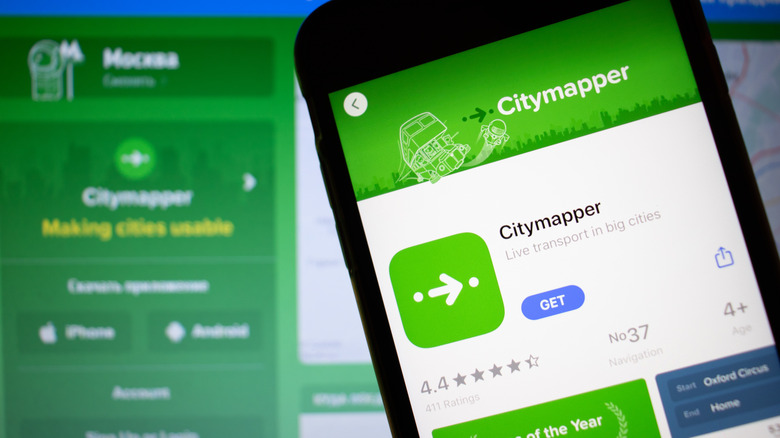
Postmodern Studio/Shutterstock
If you’re visiting Tokyo, Citymapper is a must. Just like it does for multiple other cities across the globe, the award-winning app analyzes public transportation, congestion, and distance to figure out all the different ways you can reach your destination, and precisely how many minutes each option will take.
Whether it’s walking, cycling, taxis, metro, or a combination of everything, all you need to do is select your chosen route and follow Citymapper’s step-by-step instructions. When we say step-by-step, we mean it. The app’s so smart that it will even tell you which exits and entrances to use at each station to make your journey as stress-free as possible. If you miss your stop or don’t quite make your train, the app will also take that into account to restrategize your trip ASAP. You’ll need to be online to request a new route, but if you check your journey ahead of time, you can save it to your homepage for offline use.
Visit between January and March
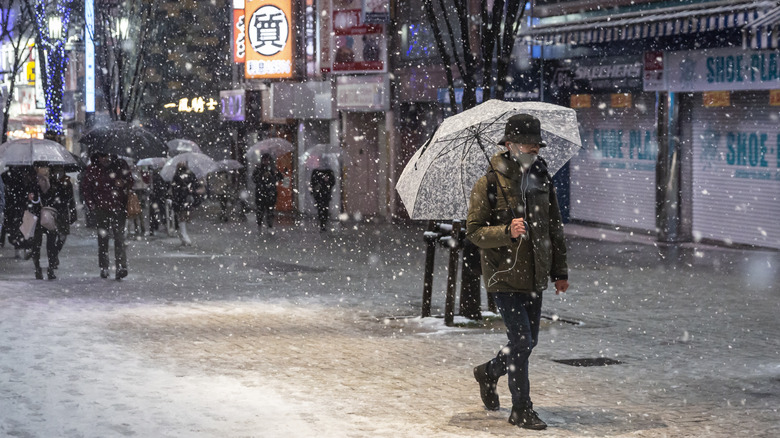
Yuichi Yamazaki/Getty Images
There is no one “best” time to visit Japan, but there is a most convenient time. January to March tends to attract less crowds and will also usually bring the cheapest flights of the year. While it’ll almost certainly be cold, you’ll skip typhoon season and be in with a chance of seeing Japan in the snow.
If you do choose to visit at this time, just be sure to check the dates of the Lunar New Year (AKA Chinese New Year). This tends to be a public holiday across the region and will see cities across Japan packed with tourists. As it’s such a popular time to travel, this will also be the exception to the “January to March is cheaper” rule with hotels and airlines driving up their prices over the holiday. The same is true of the end of March, which marks the beginning of cherry blossom season.
Make advanced reservations
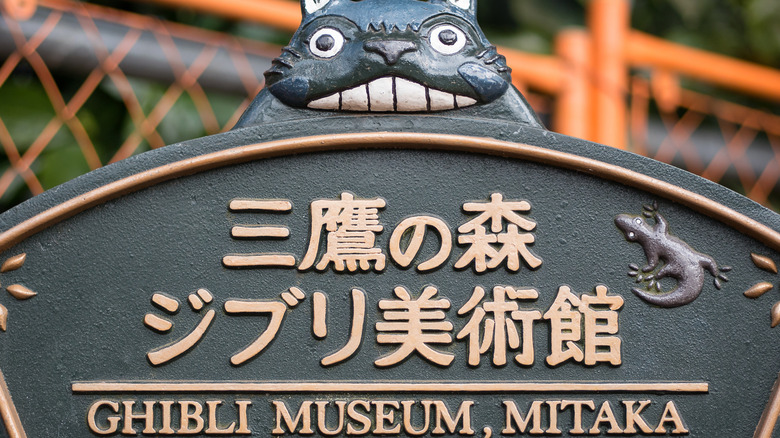
pio3/Shutterstock
There’s a lot to enjoy in Japan. The problem is that everybody else wants to enjoy these things, too. Tourist attractions often book up months in advance, and a lot of them don’t sell tickets at the gate, which doesn’t leave much space for spontaneity for the average tourist visiting Japan.
If you plan on visiting the likes of the Warner Bros. Studio Tour Tokyo – The Making of Harry Potter, Tokyo Disney Resort, Ghibli Park, Shibuya Sky observation deck, Teamlab Planets, or the Studio Ghibli Museum, it’s best to sort your tickets sooner rather than later. The Ghibli Museum is especially challenging, with tickets for the next month going on sale at 10 a.m. on the 10th of the month prior.
The same is true of the hotels at Tokyo Disney Resort. With one of the most impressive Disney hotel lineups in the world (including the MiraCosta, a hotel that is actually inside Tokyo DisneySea), rooms are in extremely high demand. These go on sale from 11 a.m. four months before the dates you hope to stay and are bookable through the Tokyo Disney Resort Online Reservations & Tickets website.
Download the Japan Connected-free Wi-Fi app
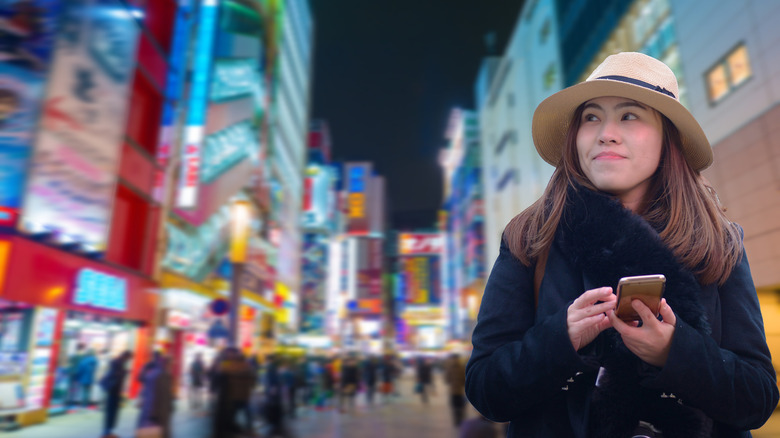
noina/Shutterstock
If you don’t want the responsibility of carrying around and charging pocket Wi-Fi, download the Japan Connected-free Wi-Fi app. Whether you need to double-check directions or just have a quick midday TikTok break, this handy tool will search over 170,000 internet hotspots to find the closest location to you. The majority of these will likely be at a 7-Eleven, where you’ll almost always be able to go online.
As if that feature isn’t useful enough, the app eliminates the need to fill in the registration forms that typically serve as a barrier before you can access public Wi-Fi. Fill out your name and email once and the app will complete each form on your behalf. While you used to need to be online to find the Internet (which kind of defeats the app’s entire purpose), you can now download the offline map to ensure you can always find a connection. Just remember to be careful with what data you enter or share while using any public Wi-Fi network.
Bring cash
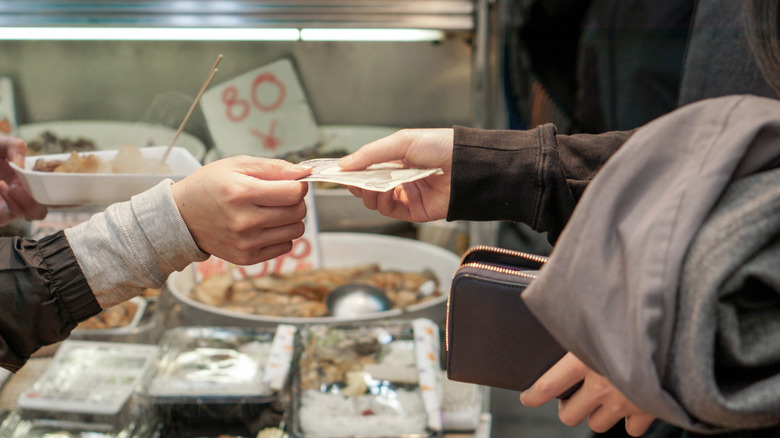
Atiwat Witthayanurut/Shutterstock
Japan has been a “cash is king” country for years, meaning paying with notes and coins is the default over ApplePay and credit cards. This attitude has slipped in recent years, but cash still has a strong grip on the country’s residents with only 36% of people preferring cashless payments.
While you should be able to use your card in most major outlets and tourist locations — such as department stores, malls, theme parks, supermarkets, and even taxis — a lot of restaurants, cafes, and bars still prefer to be paid in cash. This number will be much higher outside of major cities, and many local restaurants, markets, or temples won’t have the facilities to accept card payments even if they want to. Exchanging at least a chunk of your spending money into Japanese yen ahead of time will save you in sticky situations (plus it helps you control your spending, which is always a bonus).
Choose taxis over Ubers
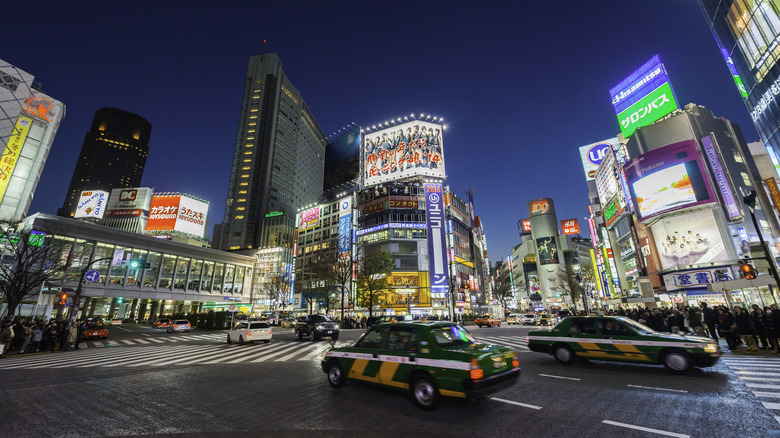
Fotovoyager/Getty Images
Although Uber exists in Japan, it’s not as widespread or commonplace as in countries like the United States, Canada, or the United Kingdom. Journeys tend to be more expensive than those taken with local cabs, making the latter the service of choice for locals and tourists alike.
The upside to Uber is, of course, the fact that it’s so familiar for many tourists. It’s easy to order your taxi and pay via card, and the entire process is in English. However, your cheapest option is to hail taxis on the street, as you won’t need to pay a base fare for the pick-up service. It’ll say on the front of a car in Japanese if it’s occupied. It’s also color-coded so tourists can understand. Red means it’s taken. Green means it’s available. If you do want to pre-book, most locals prefer to use the Go app for journeys anywhere within Japan’s 47 prefectures. This works similarly to Uber, except it allows you to pay with both cash and card and will give you a flat rate for journeys to and from the airport.
Purchase a Suica card
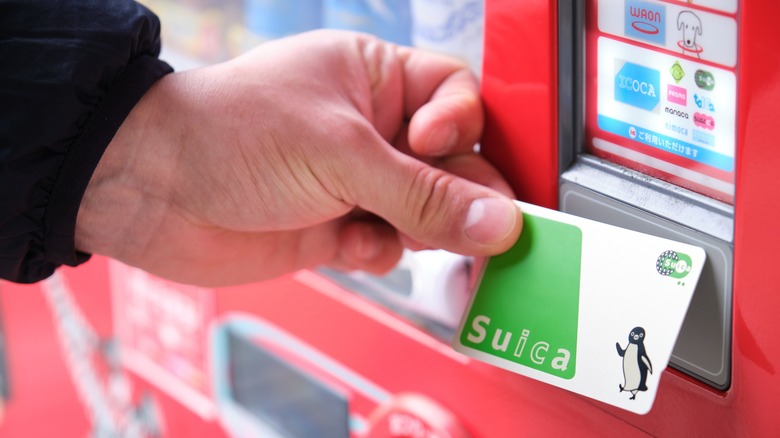
Ladanifer/Shutterstock
The question isn’t so much what a Suica card can do; what can’t it do? This prepaid, contactless card can be repeatedly loaded up with more cash to pay for public transport, including the metro, trains, buses, and taxis. Beyond transportation, Suica is also accepted in many shops, restaurants, cafes, and even vending machines. Just look out for the Suica symbol to know if they do — and if you can’t spot it, it’s at least worth asking.
You can purchase your card before arriving in Japan and return it at the end of your trip to recover your 500 yen ($12) deposit. Due to a manufacturing shortage, the sale of new Suica cards is temporarily on hold as of June 2023, but if you’re on a temporary visa, you can still purchase a Welcome Suica card. This doesn’t require a deposit, doesn’t need to be returned, and is valid for 28 days. These can only be purchased inside Japan at locations such as Narita and Haneda airports and will come with a reference paper which you’ll need to keep on your person at all times.
Utilize storage lockers
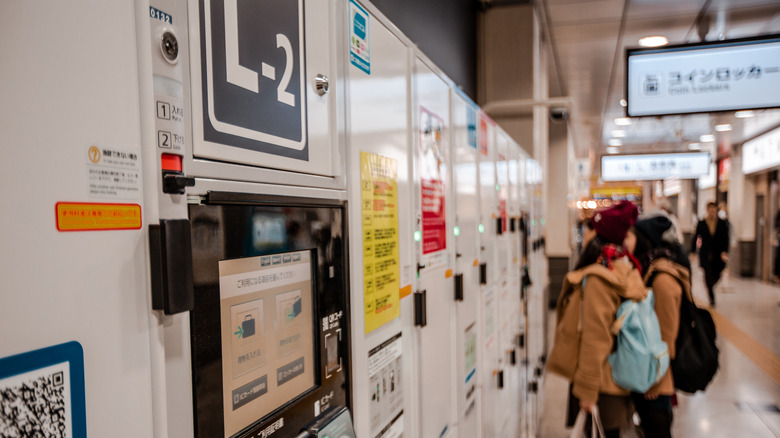
2p2play/Shutterstock
For security reasons, storage lockers are a rarity at train stations around the world. Japan is an exception. You’d be hard-pressed to find a major station without coin lockers (which, despite the name, can actually be used with a Suica card, too), and in Tokyo, most stations come equipped with storage facilities.
Baggage storage is one of those things you don’t realize you’ll need until you desperately need it. These lockers are useful if you only have a few hours before heading to your hotel or next destination and want to stow away your belongings so you can freely explore. They also happen to be extremely cheap, typically costing between $1 and $5. There’s usually no problem finding a vacant locker, but if you are struggling, you can download the SPACER app, which will allow you to find and reserve a locker at major stations such as Shinjuku, Osaka, and Shibuya in advance. This is currently only available in Japanese, but there are plans for an English version in the near future.
Avoid national holidays
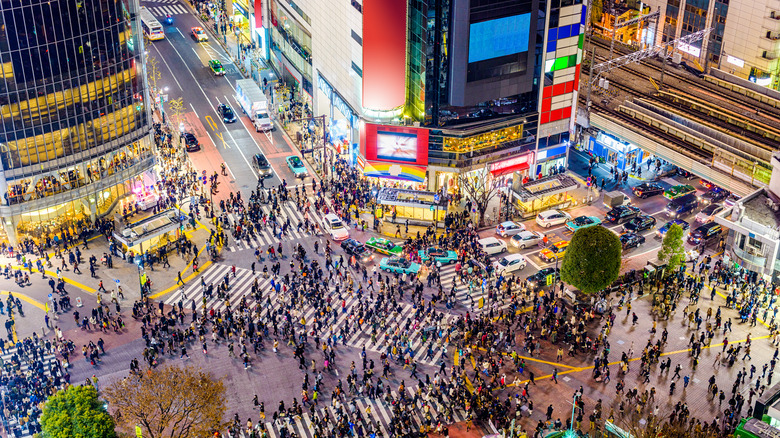
Sean Pavone/Getty Images
Lunar New Year isn’t the only holiday worth skipping if you want to avoid the crowds. National holidays bring in huge crowds anywhere, but especially Japan, where workers get little annual leave and want to take advantage of the break. If you do decide to brave big attractions like Shibuya Crossing, Senso-ji Temple, or Tokyo Skytree, you’ll likely find yourself shoulder-to-shoulder with fellow tourists.
For a quieter vacation, April 29 to May 6 — or, Golden Week — is one of Japan’s busiest holiday periods. This tends to be the most hectic season for the likes of Tokyo Disney Resort and Universal Studios Japan, where you can expect to wait in long lines for everything, from the park entrance to the restrooms. While Christmas isn’t a national holiday in Japan, it is for many other countries, meaning the festive season can also bring an influx of tourists to both of these locations. Late September (Silver Week), New Year, and the Obon Week in August are typically also very busy.
Claim your tax refund

Tomohiro Ohsumi/Getty Images
From clothes to gadgets, Japan is one of the most unique places for retail therapy in the world. If you’re a tourist, you can also shop with the peace of mind that you’ll get at least some of your money back. Any non-resident visiting Japan for less than six months can enjoy tax-free shopping, meaning you can reclaim 10% of the value of your purchase.
There are a few catches. First, you’ll need to check that the store is in fact a “tax-free shop” by checking for a logo stating as such at the entrance. They’re extremely common and can be found in the likes of Namba City, Echika Ikebukuro, and Seibu Shibuya. You’ll also need to have spent more than 5,000 yen ($33) in the same store on the same day. Some stores will let you pay tax-free from the offset if you present your passport, while others will require you to present your receipt at a tax exemption counter on the same day to get your money back.
Download a good translation app
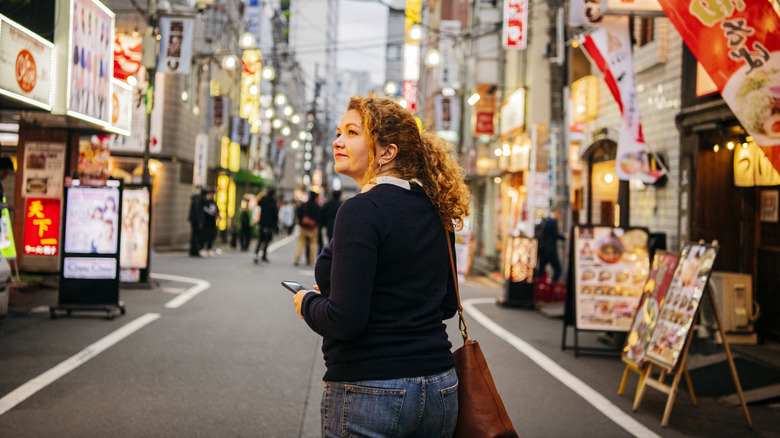
Johnnygreig/Getty Images
If you know Japanese, you’re good to go. For those of us who aren’t bilingual, Japan can be tough to navigate at times. While most signs in major cities will have translations, less than 30% of people living in Japan speak English, which means it’s inevitable you’ll hit the language barrier at some point during your stay.
A good translation app is a must, especially one that’s able to translate pictures. Google Translate is always a go-to, but one of the best choices is iTranslate Translator. Not only can it tackle text, but you can also use it to scan and translate menus, signs, labels … you name it. Best of all, it can work offline if you download the Japanese pack ahead of time. It’s free to download but will cost you $5.99 a month to unlock its full potential. Considering how useful it is, it’s better to spend $5.99 than find yourself stranded in a restaurant blind-ordering a dish because you can’t read the menu.

